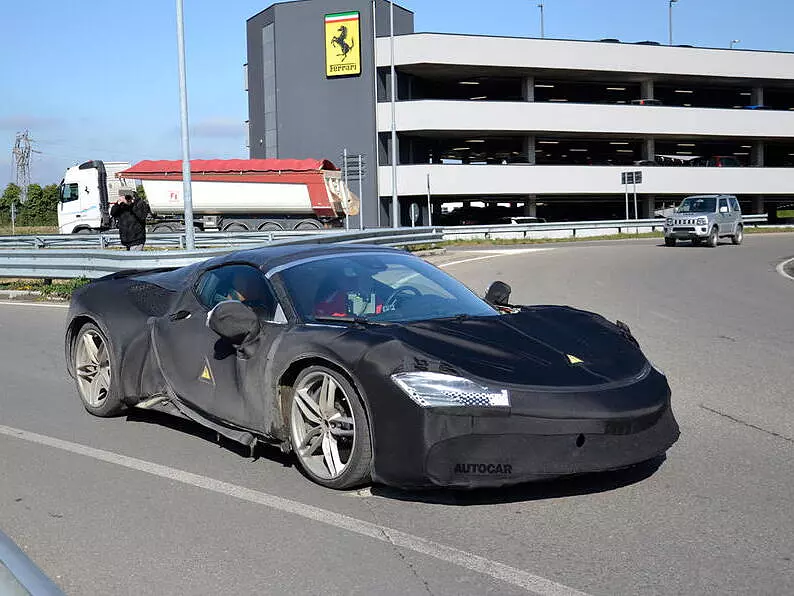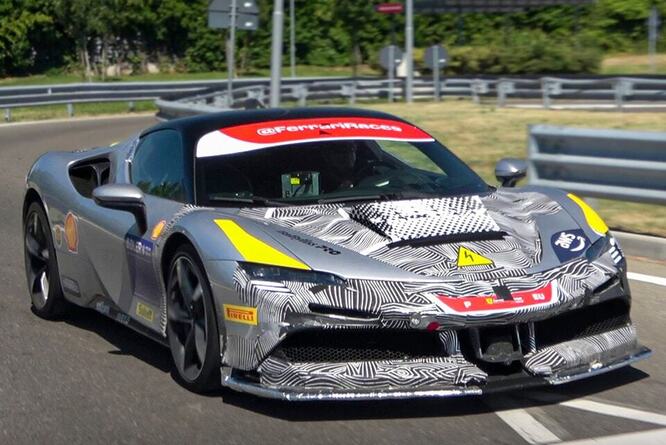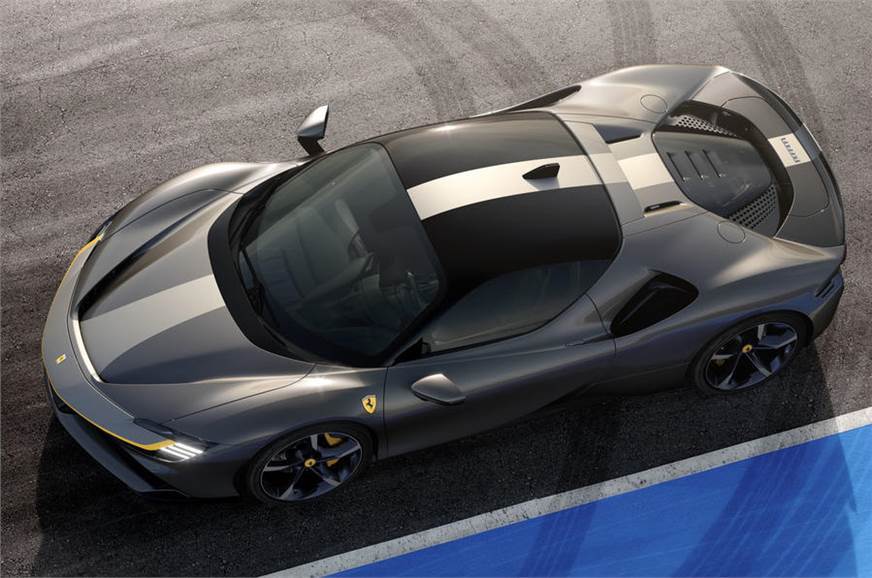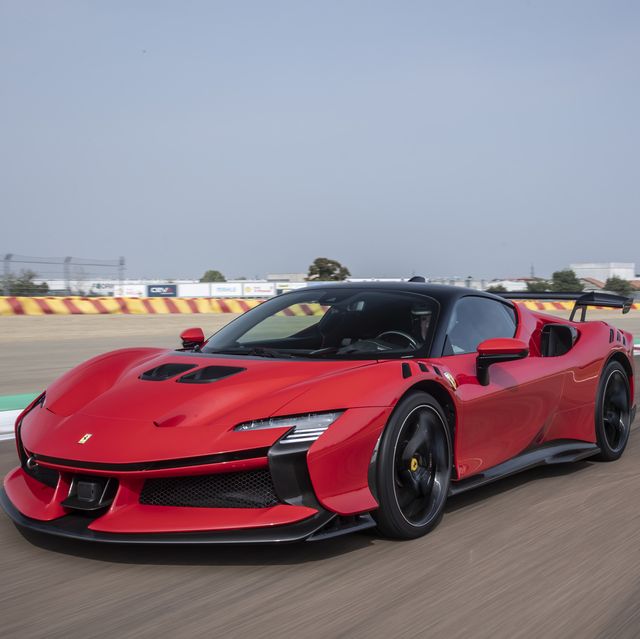Maranello’s Prancing Horse began testing chassis mules for the SF90 successor due in August 2023. Reportedly designated the F173M and likely to be called the SF100, this new model has recently been spotted with parts intended for production.

The plug-in hybrid twin-turbo V8 midships spotted at Maranello appears to mix 296 and SF90 XX styling cues. The main difference between it and the SF90 is the SF90 XX-inspired rear light bar in place of the quad-lamp arrangement. The prototype is camouflaged and features double-spoke alloy wheels wrapped in Michelin tires. It also features carbon-ceramic brakes, with two calipers on each rear disc.
The small calipers at the rear are for the parking brake, as the front disc and caliper handle the majority of the braking. The F173M’s chassis mules have somewhat larger side air intakes than the SF90 Stradale and SF90 Spider, despite the fact that these photos don’t depict it.

Additionally, the prototype has a dual-tipped exhaust system similar to the SF90 and SF90 XX. Slightly revised rear fenders accommodate updated suspension geometry, but front and rear aero trickery hasn’t been finalized. The F173M uses the rear-biased architecture of the V8-powered SF90, SF90 XX, and V6-powered 296 rather than developing a new platform.
The F173M has a high-voltage sticker on its windshield that, predictably, tells you it’s a plug-in hybrid. The 296 is a rear-wheel drive-only vehicle that uses a YASA-supplied electric motor to assist the 120-degree V6 when the throttle is opened wide. Using only electric muscles, one can achieve speeds of up to 135 kilometers per hour (84 mph) in eDrive mode. However, the SF90 variants come with three electric drive units. Two motors, namely the motors powering the front wheels, are responsible for reversing. In other words, the SF90 uses front-wheel drive in eDrive mode and reversing.

The eight cylinders of the SF90 and SF90 XX are arranged in two banks, forming a 90-degree V. The V8 engine uses 98 RON fuel, similar to the much smaller V6 engine. It belongs to the F154 series, which debuted in 2013 with the Maserati Quattroporte GTS.
What is the main difference between the F154 engines manufactured by Ferrari and Maserati? It would be a crankshaft design, similar to the flat-plane crank of the Prancing Horse and the cross-plane crank of the House of the Trident. At the end of 2023, the Maranello-based carmaker will stop producing the cross-plane F154 for Maserati, producing in turn a three-motor electric powertrain called the Folgore (the Italian word for lightning) and a 3.0L twin-turbocharged V6 called the Nettuno, named after the Roman god Neptune.

Although this Modenese should be very different from the carmaker’s MC20 Folgore and other low-end electric vehicles, Ferrari is also developing an electric vehicle. Anyway, internal combustion engines are not going to go extinct at Ferrari anytime soon. Whether it uses synthetic fuel or not, the Prancing Horse wants to extend the life of its free-breathing V12.
Ferrari also decided against forced induction for the V12, meaning the only turbocharged engines available were the wide-angle V6 from the 296 and the previously mentioned V8. The LaFerrari’s replacement will switch to a 3.0-liter TT V6, while the SF90’s replacement has eight cylinders.